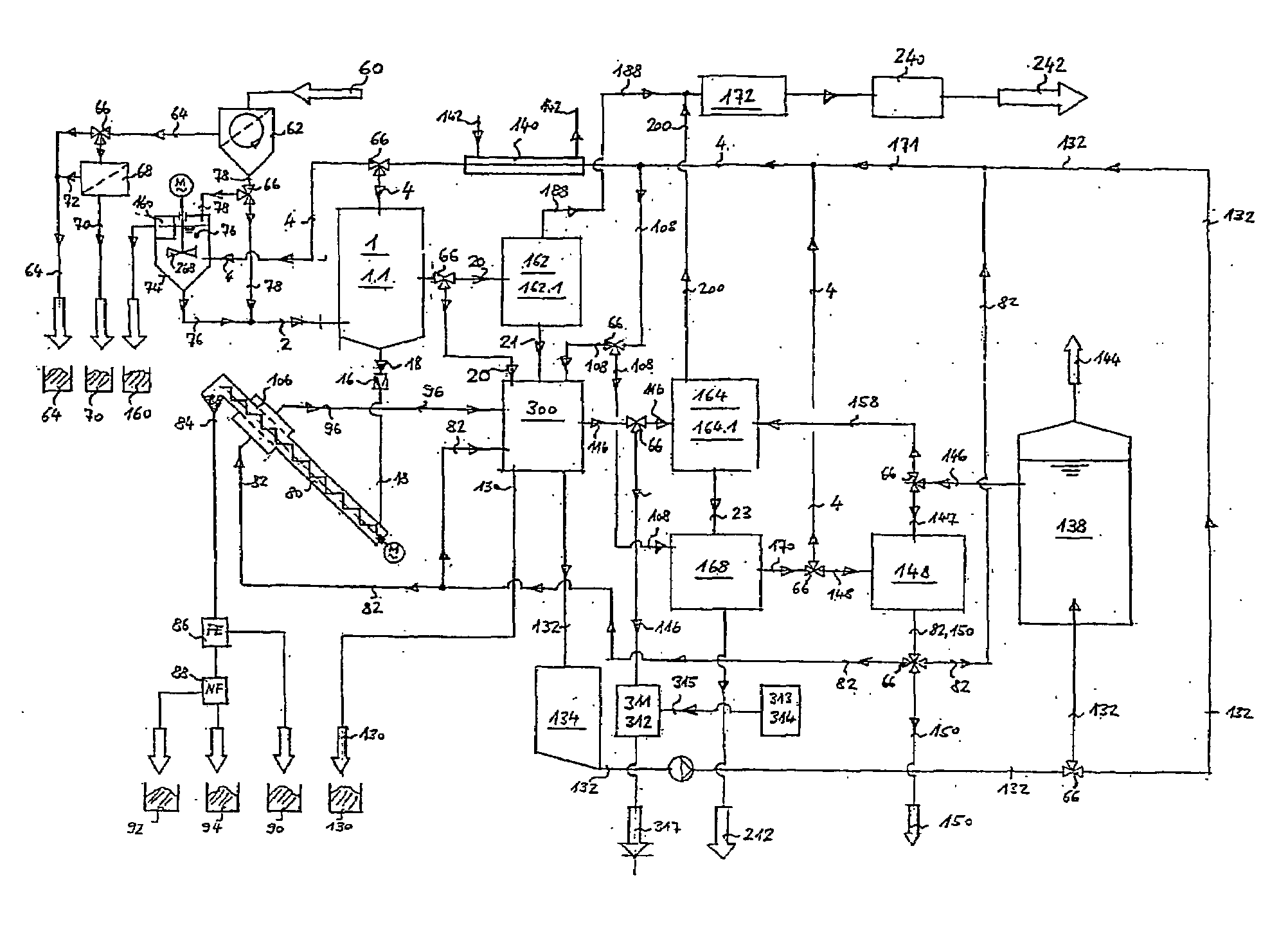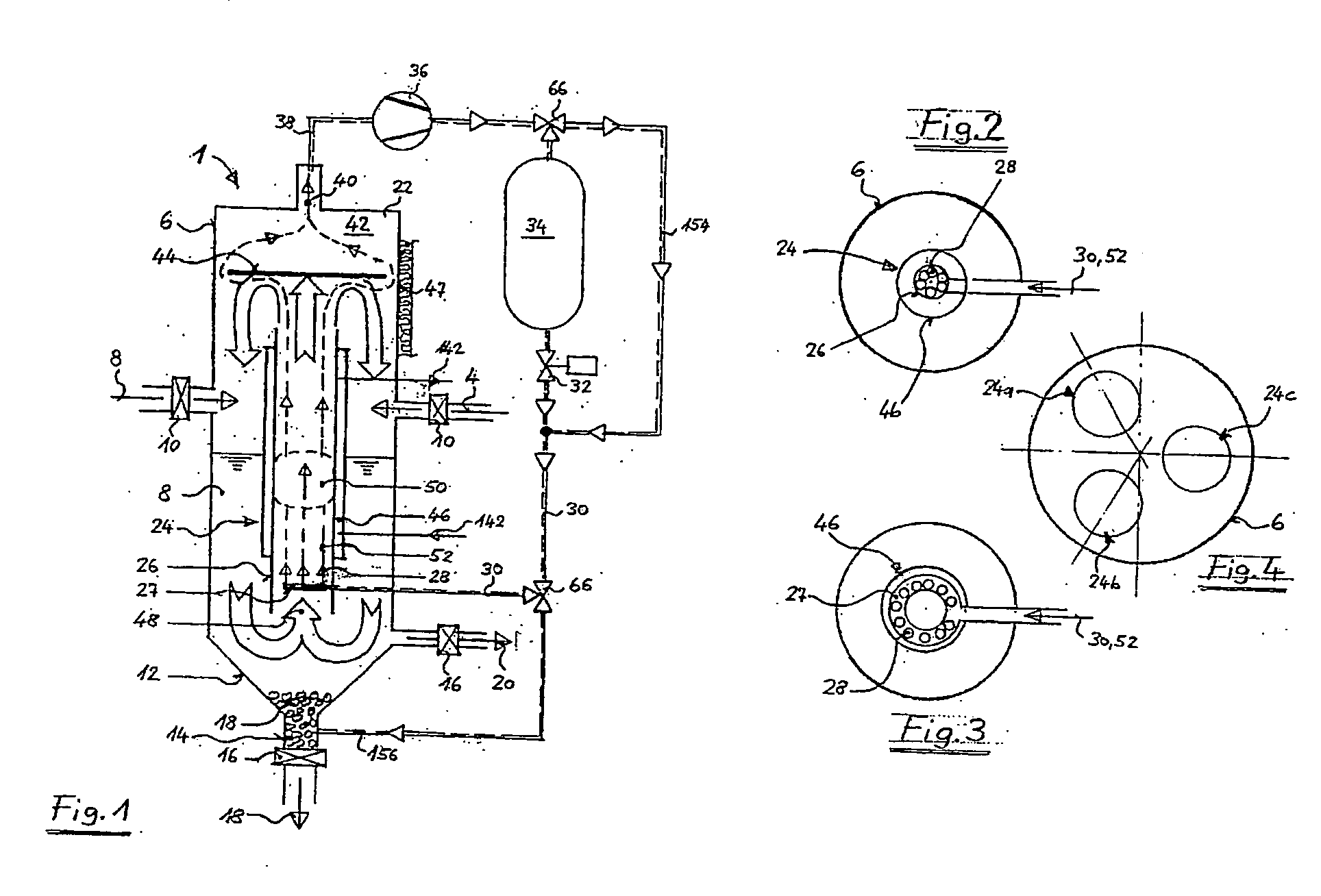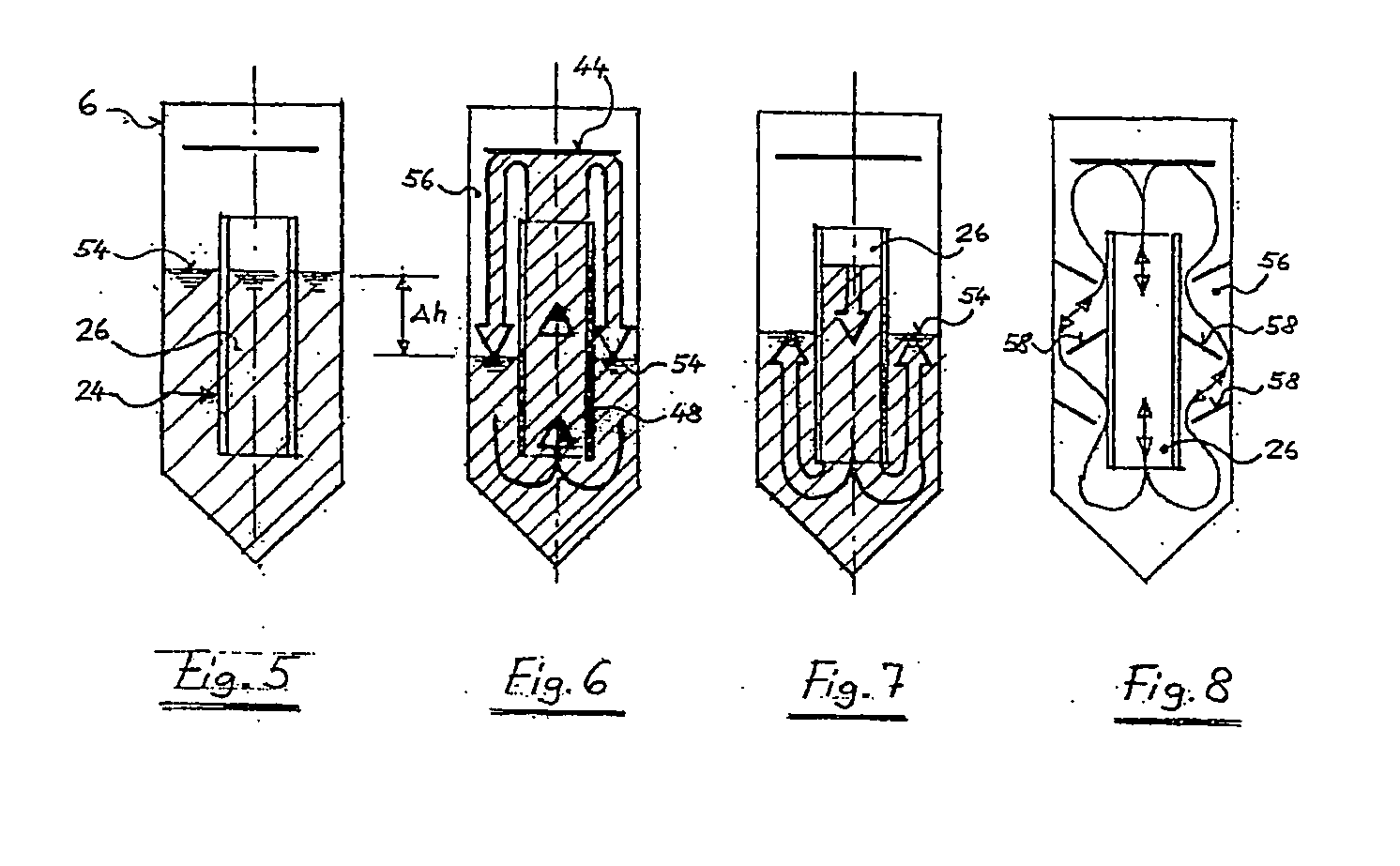Material Solubiliser Reactor For Hydrolysis and/or Wet Fermentation and Waste Treatment Plant With Such a Solubiliser and Reactor
a solubiliser and reactor technology, which is applied in the direction of bioreactors, gas production bioreactors, biomass after-treatment, etc., can solve the problems of high excessive wear of blades, and high equipment requirements of individual method plants, so as to achieve the effect of reducing equipment and equipment requirements, and improving the effect of thorough mixing
- Summary
- Abstract
- Description
- Claims
- Application Information
AI Technical Summary
Benefits of technology
Problems solved by technology
Method used
Image
Examples
Embodiment Construction
[0100]In FIG. 1 the basic structure of a material solubilizer 1 is shown in which organic material of a supplied input material 2, preferably waste in a solvent, for instance diluting water 4, is dissolved so that in the material solubilizer 1a mixture 8 is provided having a dry matter content of about 5 to 10%. The waste mixture supplied to the solubilizer 1 preferably has a maximum particle size of approx. 80 mm. The waste 2 and the diluting water 4 are supplied via inlet locks 10 to a material solubilizing tank 6. A bottom 12 of the material solubilizing tank is tapered and opens in a discharge opening 14 having an outlet lock 16 through which impurities / high-gravity solids 18 settling at the tapered bottom 12 can be extracted. In the area of the tapered bottom 12a further outlet lock 16 is formed through which the suspension 20 decomposed in the solubilizer 1 and loaded with organic material is extracted and, according to FIG. 9, treated and then supplied to the circuit again as...
PUM
 Login to View More
Login to View More Abstract
Description
Claims
Application Information
 Login to View More
Login to View More - R&D
- Intellectual Property
- Life Sciences
- Materials
- Tech Scout
- Unparalleled Data Quality
- Higher Quality Content
- 60% Fewer Hallucinations
Browse by: Latest US Patents, China's latest patents, Technical Efficacy Thesaurus, Application Domain, Technology Topic, Popular Technical Reports.
© 2025 PatSnap. All rights reserved.Legal|Privacy policy|Modern Slavery Act Transparency Statement|Sitemap|About US| Contact US: help@patsnap.com



